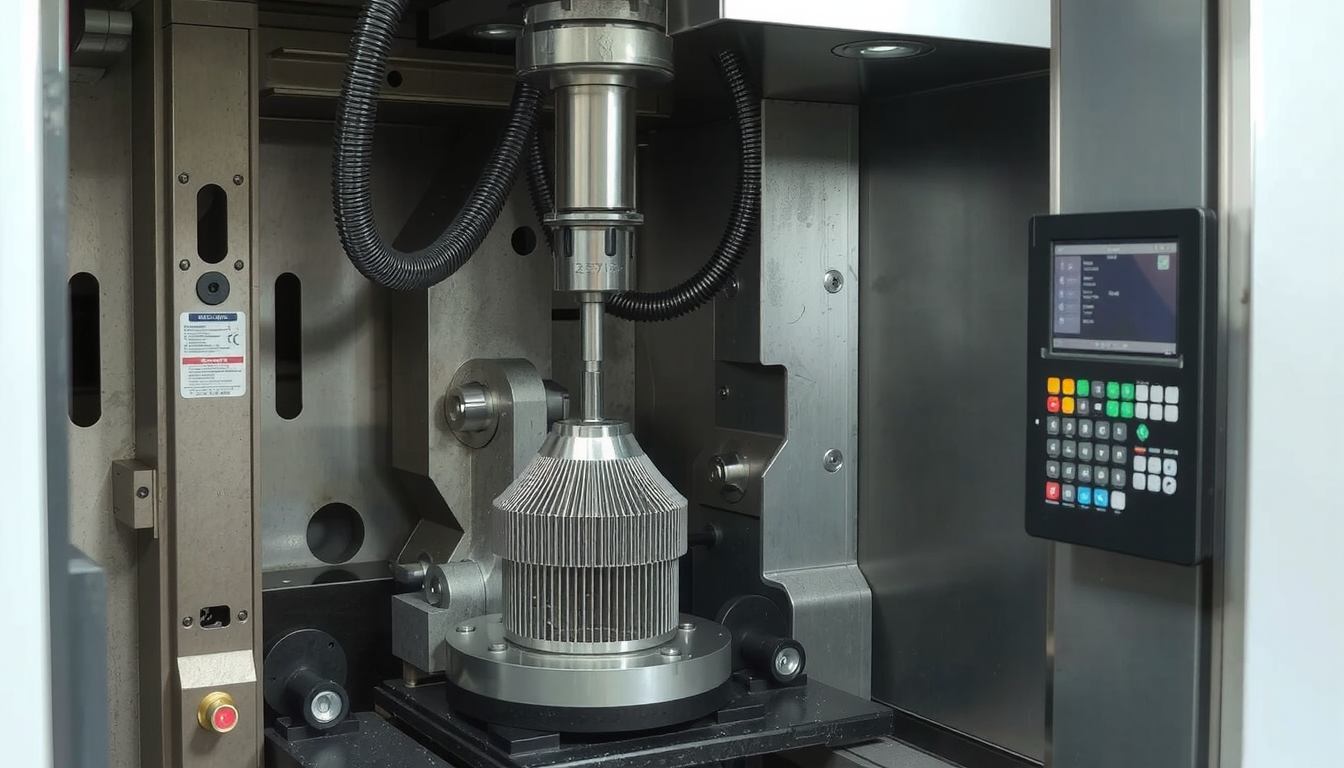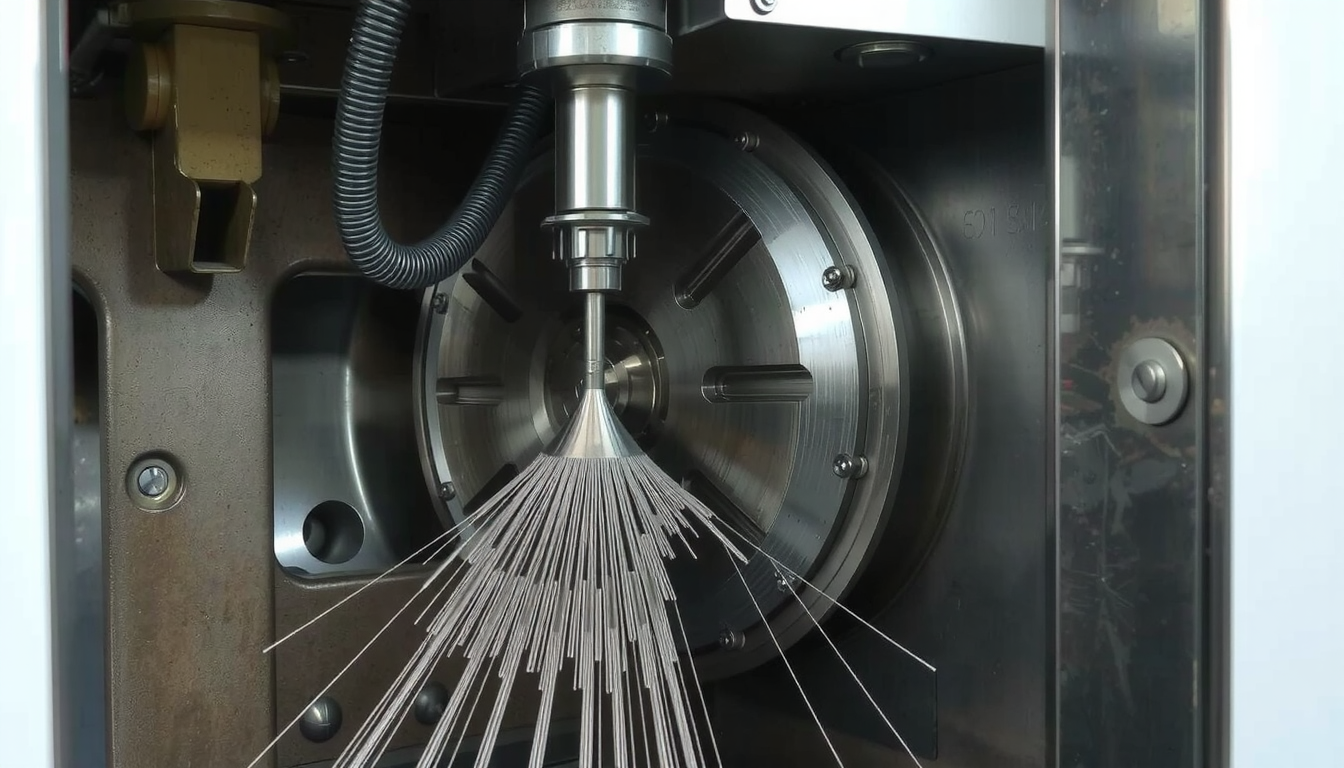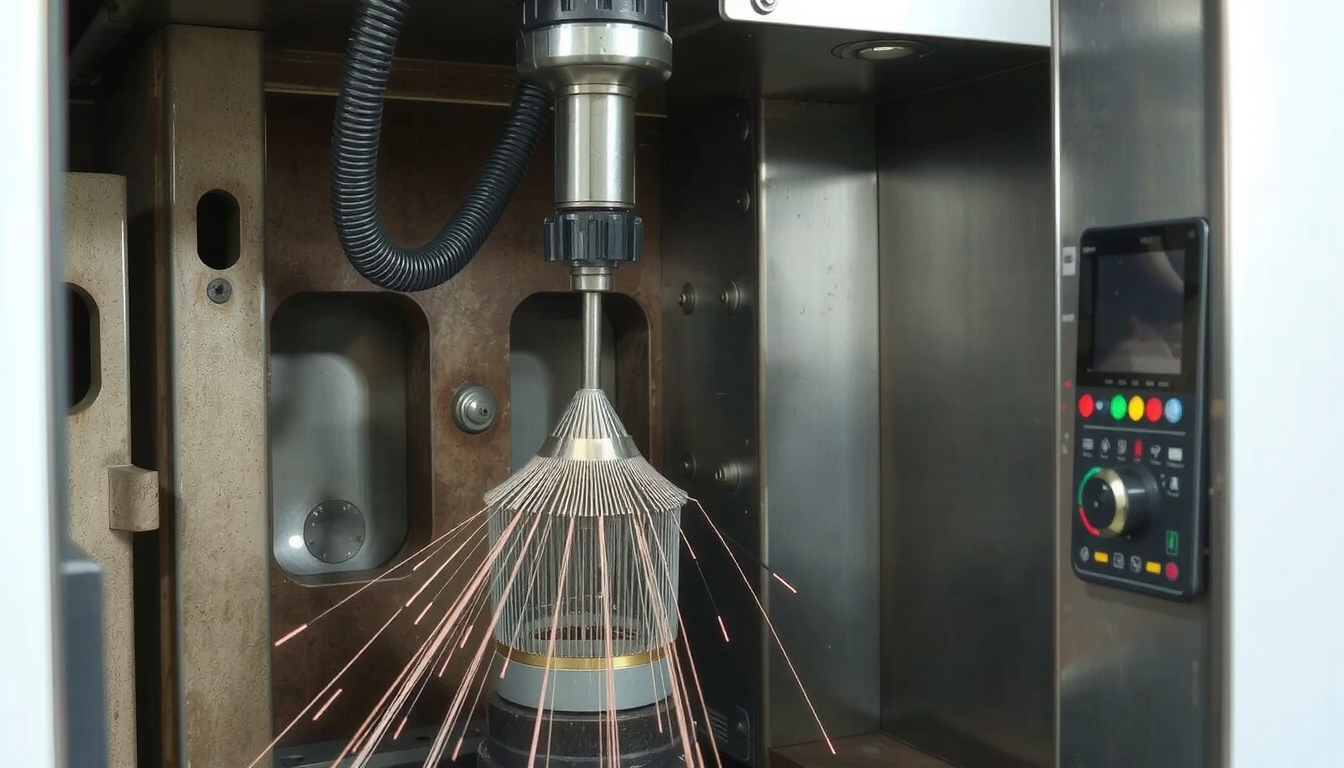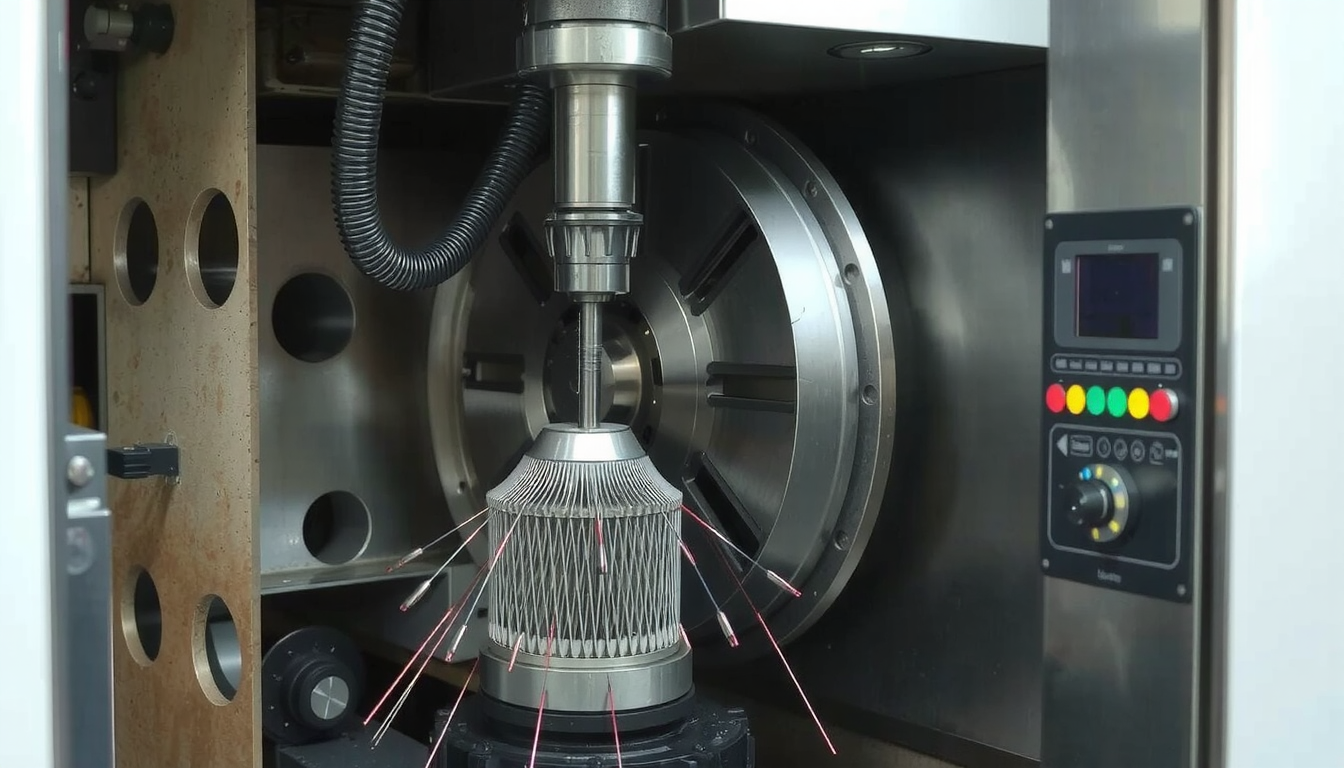Introduction: Getting Your Parts Built, Fast

You need specific components for your project. You need them instantly. Tight deadlines can be the drumbeat of product development. This applies to every single step from the first prototype to the brand new final product. Waiting extra days for parts is a thing of the past. These days the market is fast-paced and innovates too fast.
This is the need for quick turn CNC machining. A service that focuses primarily on the expeditious manufacture of parts. It helps you get unique and high-quality machined parts in a few days instead of several weeks.
This writing will give you an overview of what quick turn CNC machining actually is. The advantages will be discussed. Learn also tips on the best design for maximum speed and minimum cost. Additionally, we shall assist you in the choice of the right contractor.
Quick Turn CNC Machining: Not Just About Quickness
Quick turn CNC machining is the provision of fast custom part services. It works with the least lead times. The same CNC machining technology is used. It is precise but is optimized for a rapid production of parts.
What is the hint “Quick turn”?
“Quick turn” can be the term for an entire process. The whole process takes a lot of time from getting requested a quote through to the shipping of the last parts. There must be an overall aim that guides you with appreciable cuts to time. If many shops are involved in this, in 3-5 working days, you will be delivered your parts. This speed is a treasure for those who are in a race against time.
What are the differences between CNC standard production and CNC quick turn production?
The core technology is not different. The machines for both the traditional and the fast-repair production mechanisms use computers. The point of differentiation is in the workflows that divert. A quick turn process is a combination of an automated quoting application, streamlined project management, and a production schedule favoring fast jobs. It will, therefore, be possible to eliminate delays and fasten each process accordingly.
Main Processes Used: Milling and Turning
CNC milling and CNC turning are the two processes you will encounter most often in quick turn CNC machining.
Milling is a type of subtractive manufacturing in which rotating cutting tools remove material from a fixed workpiece. It is suitable for flat surface design. In addition to that, it can deal with complicated shapes like pockets.

CNC turning is a process where a metal or plastic bar is twisted and cut into shape using a tool. With the lathe simply rotating the bar, you easily cut round or cylindrical parts such as shafts, pins, and connectors. For cylindrical parts, a specialized Service de tournage CNC is utilized which provides high precision and usually perfect surfaces.
The Business Benefits of Speedy Turnaround
When you think quick turn service, don’t just think about keeping a deadline. This also means a real business advantage. They will create conditions that will promote success for your project. Modern manufacturing and design have rapid prototyping such as this which is one of the most effective tools.
Here are some of the reasons for employing a process like quick turn CNC machining:
- Faster Product Development: Acquire functioning prototypes with no delay, examine your designs, find flaws, and be able to perform changes pretty quickly. The new approach to designing allows you to produce more designs in a shorter time.
- Competitive Edge: Getting your product to the market faster than your competitors gives you major plus points. Quick turn service providers are able to help you streamline your development process. This in turn will allow you to launch your products first.
- Reduced Risk: You can run substantial tests with parts produced from production-grade materials before you buy expensive tools. This confirms your design is ok. This will not only mitigate risk but also save you from far more costly errors in the future.
- On-Demand Production: This service is great when making parts in small batches. You can produce custom tools, jigs, or replacement parts. You are not bound to carry a large and unnecessarily expensive inventory.
- Supply Chain Resilience: If the main supplier has a delay, you cannot afford to stay put. A quick turn CNC machining service will, at that time, be your insurance. They will get you the parts needed to keep the production chain up and running.
The Quick Turn Triangle: Model for Managing Speed, Cost, and Complexity
Three parameters in quick turn manufacturing always work with one another: Speed, Cost, and Complexity. For the triangle model, let us consider them. If you change one, the other two will be affected. Finding this connection is worth knowing. It can get you the best results for your project and budget.
Influence of Part Complexity on Speed and Cost
The more complex a part is, the longer it takes to make. It also costs more. For example, very deep pockets can create issues. Walls that are too thin may be difficult. Very smooth, complicated forms are likely to demand special tools or more machine time.
A part that has 3-axis features can be done on a standard machine in no time. However, an addition of details such as undercuts or curved surfaces may need advanced 5-axis machining capabilities. It is more complicated, for sure, but doing 5-axis work might involve harder programming and setup. This adds to the lead time and cost.
The Importance of Material Choice
The type of material you are going to use is also very important in machining speed. Not all materials are equally easy to machine. Some are easier to cut than others, a property called “machinability.”

Common materials like aluminum 6061 and plastics like Delrin are easy to machine. This means they can be cut quickly, leading to lower costs and faster turnaround. Harder materials like stainless steel or special, hard-to-machine alloys require slower cutting speeds and cause more tool wear. This increases both time and cost.
The Point of Equilibrium
The target is to find the right mix for your particular demands. You can design parts to be produced quicker and cheaper, but not at the cost of losing their functionality. Whenever possible, just take the option of simplifying the shape. Use common hole sizes and standard corner radii.
Tight tolerances should be applied exclusively on the critical features. Tolerances are the permitted range of change that a dimension can undergo. For very small, detailed parts, a process such as Services de tournage CNC suisse is designed to handle high complexity efficiently.
This grid delineates the correlations of these factors:
| Facteur | To Maximize Speed | To Minimize Cost | Considerations for High Complexity |
|---|---|---|---|
| Géométrie | Uncomplicated shapes, 2.5D features | Simple geometry, fewer machine setups | Requires 5-axis, longer machine time |
| Matériau | Aluminum 6061, Acetal (Delrin) | Common, readily available stock materials | May need specialty & hard-to-machine alloys |
| Tolérances | Standard (+/- 0.125mm or 0.005″) | Looser tolerances where possible | Tighter tolerances require more inspection time |
Your Pre-Flight Checklist: 7 Steps to a Flawless Quick Turn CNC Order
A well-prepared Request for Quote (RFQ) is the most critical factor from our experience. It is the main thing for a successful quick turn project. A proper and clear RFQ prevents delays. It curtails questions and brings about the right parts to you. Follow this checklist whenever you are submitting your next order.
-
Finalize Your CAD Model. The main file for the machine is your 3D CAD model. It has to be thoroughly cleaned, fully corrected, and must depict the final part you desire. The STEP file format is the most widely used and preferred format.
-
Create a Clear 2D Drawing. Even if you order a quick turn, a 2D drawing is very important. Use PDF format. Include that which is not given in the 3D model, for example, critical tolerances, thread types, surface finishes, and which features are most important.
-
Specify Material and Hardness. Be strictly accurate in choosing your material. Avoid writing “Aluminum.” Just go ahead and specify “Aluminum 6061-T6.” If the part needs a specific hardness after heat treatment, include that information.
-
Define Required Tolerances. Use very close tolerances only in those parts where it is truly necessary for the product to work. For all other features, use a general tolerance block on your drawing. A standard of +/- 0.125mm (0.005″) would be suitable. This gives latitude to the machinist and speeds up the process.

-
List All Finishing Requirements. If your part needs a surface treatment, state it upfront. This includes anodizing, bead blasting, powder coating, or plating among others. Each additional finish adds time to the order, so make sure to include it in your planning.
-
State Your Quantity and Required Delivery Date. State how many parts you’ll require. The date you need them by is what you should mention. Clarifying your timeline to the supplier shall enable them to schedule the job appropriately for a quick turnaround.
-
Include Any Special Instructions. If a certain feature is critical for the part’s function, point it out. Note any special inspection needs or things to know for assembly. This extra information helps to avoid mistakes.
Choosing an Appropriate Quick Turn CNC Machining Partner
The right supplier selection is as vital as your design preparation. Your parts’ quality essentially hinges on a significant partnership. Your project’s success equally stands on it. Opt for a supplier that can guarantee speed, quality, and efficient communication.
Look Beyond the Instant Quote
An instant quote available on the internet is terrific; however, it is just a part of the entire picture. A reliable partner is much more than just a price. They must communicate effectively and provide your design with expert feedback. This input is a Design for Manufacturability (DFM) perspective. Thus you will be able to save costs and make your product better.
Key Factors for the Selection Process
When making comparisons of suppliers, using these features shall help you make a perfect decision.
- Lead Times: Confirm their timeliness, as their specialty should be speed first. The best suppliers are the ones that will publicly endorse their Rapid machining services with impressive delivery records.
- Material and Finishing Options: Verify their stock for the requisite materials and finishing processes. A good range will afford you the capability to be flexible in your projects.
- Certifications de qualité : Seek certifications such as ISO 9001. This will show the company has a reliable quality control system in place.
- Customer Reviews and Case Studies: Read the comments of previous buyers. Reviews and past projects will give you the confidence you need that your supplier will keep their word.
- Expertise and Support: A good partner, like MekaLite, will offer engineering support. They help you optimize your design. A preferred supplier of precision machined components will often highlight their commitment to quality on their main site.
Conclusion: Accelerate Your Innovation
Quick turn CNC machining is a crucial enabler for every organization involved in product development. It bridges the gap between a digital design and a functional part. You are hence able to be swifter and more sure of your actions.
Intelligent design decisions follow from the recognition of the speed, cost, and complexity balance. By preparing your order carefully, you can ensure a smooth process. This approach will help you to make effective use of this valuable manufacturing service and accelerate your innovation.
Frequently Asked Questions (FAQ) about Quick Turn CNC Machining
1. How speedy is “quick turn” CNC machining?
The speed may differ based on the difficulty of the part, material, and supplier. Nonetheless, simple parts made of common materials can often be machined and shipped in 3-5 business days. Complicated parts or those requiring special finishes may take 1-2 weeks.
2. Is quick turn CNC machining more costly than standard production methods?
On a per-part basis, yes. You are paying a premium for speed, priority scheduling, and fast setup. For prototypes and short production runs, however, it is much more cost-effective. It avoids the high tooling costs needed for mass production.
3. What file formats do I need to provide for a quote?
A 3D CAD file is required. The most common and preferred formats are STEP (.stp, .step) and IGES (.igs, .iges). It is also highly recommended that you provide a 2D PDF drawing to specify all your tolerances, finishes, threads, and other key details.
4. Can I get complex, 5-axis parts with a quick turnaround?
Yes, many quick turn CNC machining providers offer 5-axis services. These machines can create very complex shapes. Be aware that the lead time will likely be longer and the cost will be higher compared to simpler 3-axis parts due to the extra programming and setup time required.
5. What are the most common materials used in quick turn CNC machining?
The most common materials are those that are easy to machine. This allows for faster production. This list includes aluminum alloys like 6061 and 7075, stainless steel grades like 303 and 304, and various plastics such as ABS, Polycarbonate, and Acetal (Delrin).

